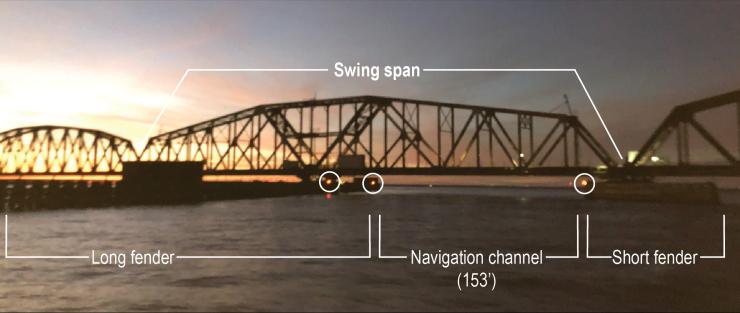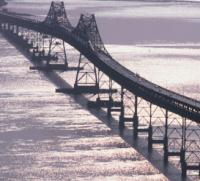On 12 January 2021, an empty hopper barge being pushed by the Robert Cenac struck the CSX Rigolets railway swing bridge while it was opening. The bridge, which is near Slidell, sustained damage estimated at US$1.1 million and the barge sustained minor damage estimated at US$5,000.
The pilot of the Robert Cenac had called the bridge operator at about 10:31pm CST to request the bridge to be opened. The bridge operator informed the pilot that two trains had to pass first before he would be able to open the bridge, which normally took about 12 minutes to open fully.
The Robert Cenac held about 1.5 miles from the bridge awaiting further communication from the bridge operator.

Above: The Robert Cenac, pictured after the accident
According to CSX records, the second train cleared the bridge at 11:34pm The captain began his approach to the bridge at 11:48pm. The captain told investigators that by the time he noticed the bridge was not fully open, the tow was too close to stop. Investigators determined the bridge operator did not immediately open the bridge after the second train had passed.
Neither the captain nor the bridge operator confirmed the status of the bridge opening with one another. Their accounts of communication surrounding the accident differed. Investigators were not able to confirm the accuracy of the statements as there were no audio recordings or witnesses to the communications.
In addition, investigators found the swing span of the bridge was not fitted with any navigational lighting, as required by regulation, to indicate that it was in the open or closed position nor were navigational lights located at the end of the fenders protecting the bridge piers, also required by regulations.

Above: The Rigolets Bridge pictured in the closed position on 29 January 2021. It is shown as being approached from the south, heading north. Red navigational lights on the west and east fenders are circled. NTSB pointed out that the bridge was not fitted with all navigational lights as required by regulation. Image source: Bullard Marine Solutions, annotated by NTSB
The NTSB determined the probable cause of the accident was the poor communication between the bridge operator and vessel operator. Contributing to the accident was the absence of bridge span navigational lighting that would have provided the vessel operators with a visual indication of the bridge’s opening status.
“Communication between drawbridge operators and vessel operators requesting bridge opening must be clear,” the report said. “Commonly used in all modes of transportation, closed loop communication, in which the sender confirms the message is understood or provides additional information or clarification, ensures the receiver understands the message.”



